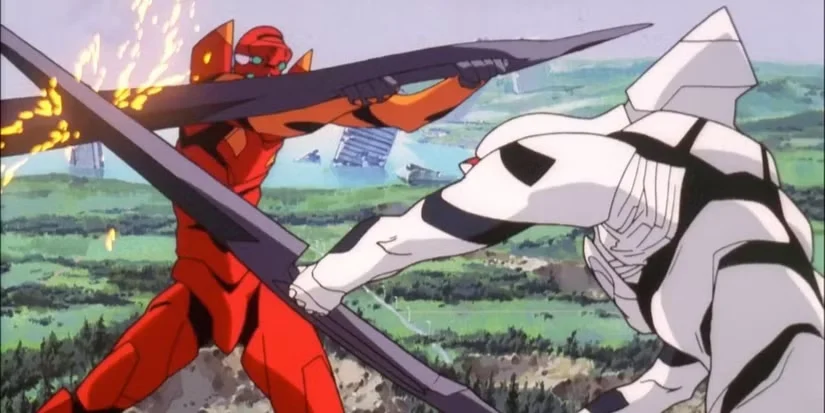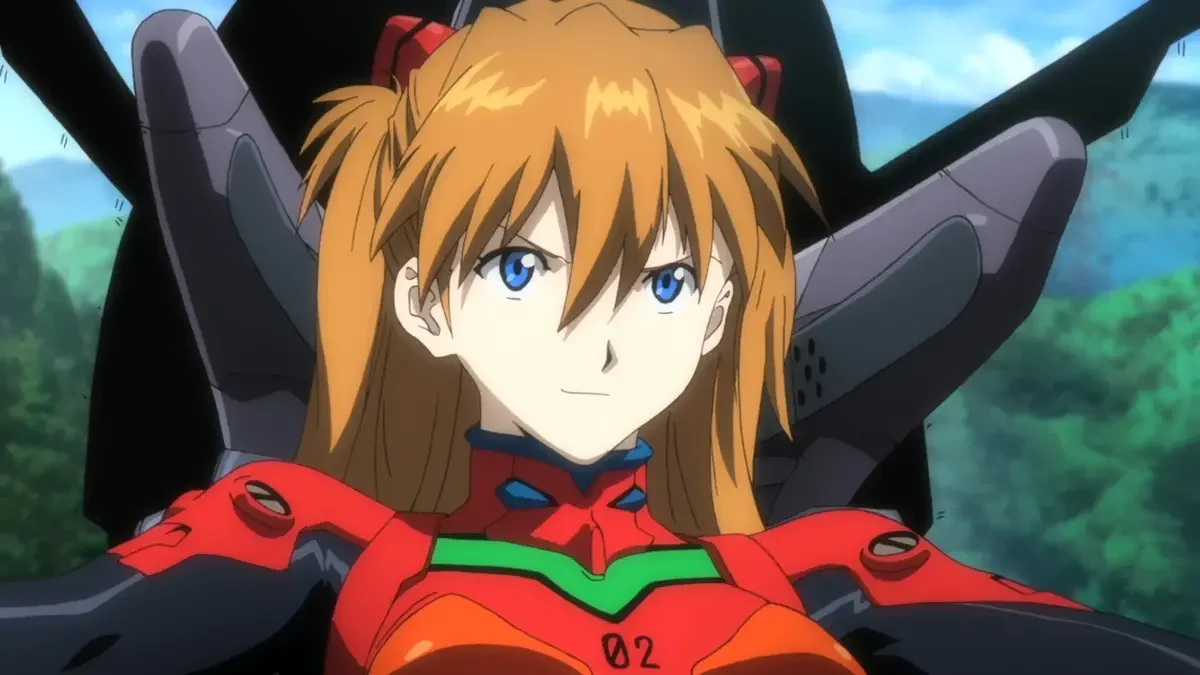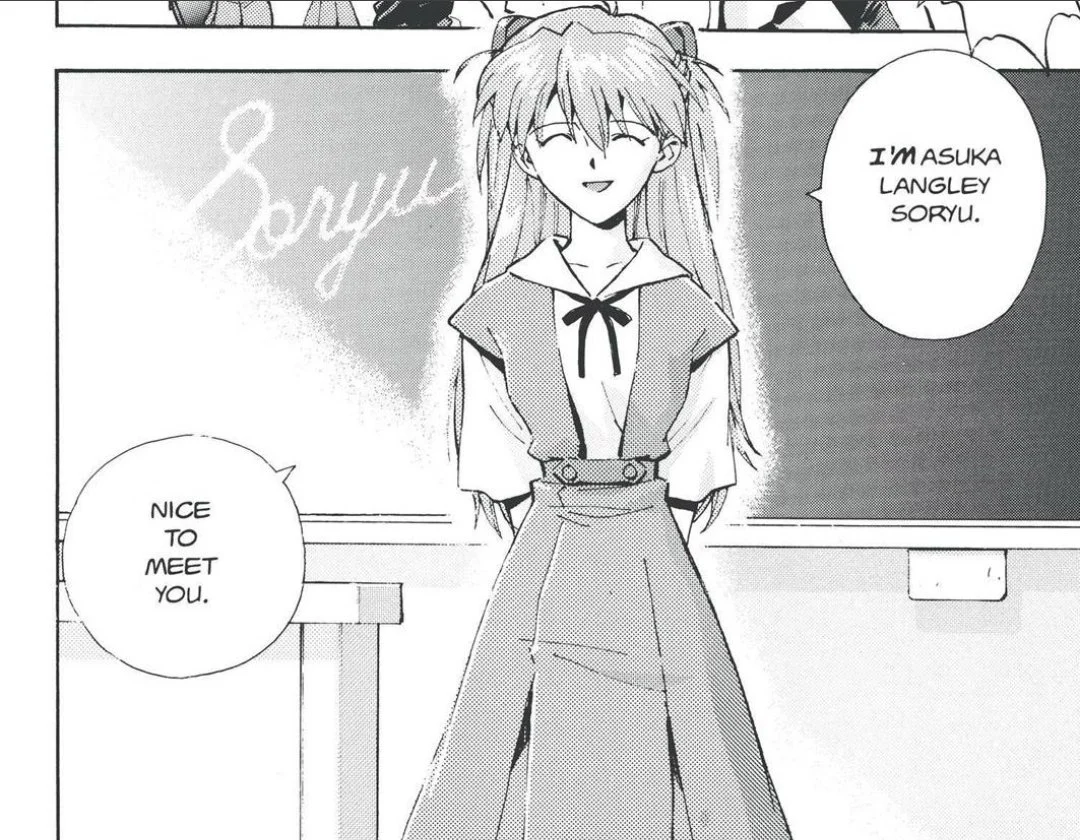
Asuka Langley Soryu made a strong impression when she joined ‘Neon Genesis Evangelion’ as the Second Child. She brought a unique combination of piloting skills, a confident personality, and an international perspective to the team. Asuka is known for piloting EVA Unit-02, a highly mobile and close-combat focused Evangelion. Her arrival changed the group’s dynamics and allowed the series to delve deeper into themes of connection, strategy, and the complex systems behind the giant robots.
Asuka’s story appears throughout the original ‘End of Evangelion’ series and the ‘Rebuild of Evangelion’ films, connecting to the franchise’s main ideas about identity, trauma, and the impact of using young people as weapons. Different versions of her character—with varying backgrounds, equipment, and fates—show us how the Evangelions work, how pilots are chosen, and how organizations like NERV function. Ultimately, Asuka is both a skilled fighter and a way to understand the inner workings and psychological aspects of the entire series.
Multinational Origins and Multilingual Skills

Asuka has a diverse background, having grown up with German roots through her mother’s work and living in multiple countries. This is reflected in her ability to speak both German and Japanese, showcasing the international nature of NERV, the organization she works for. NERV itself operates on a global scale, coordinating research, maintenance, and operations with people from different nations – a detail woven into the series’ world-building.
The way Asuka speaks isn’t just a quirk—it impacts everything from important mission updates to teamwork and how she works with the experts assigned to her EVA unit. It also highlights how the Marduk Institute finds potential pilots all over the world, placing them in local schools and training programs before they begin their duties. Asuka’s ability to speak many languages is why she quickly becomes a valuable part of the Tokyo-3 command team and can easily understand technical manuals and instructions from various departments.
EVA Unit-02: Production-Model Mastery

EVA-02 is the first mass-produced Evangelion, built for actual combat instead of just testing. It’s designed to be fast, easily equipped with different weapons, and tough enough for long battles, which suits Asuka’s aggressive fighting style. Asuka often uses a variety of weapons like pallet rifles and progressive knives, supplied by NERV, allowing her to handle enemies at any distance.
Asuka’s missions showcase how the Evangelion Unit-02 works in action, pushing its systems to the limit – quickly shifting power, managing its connection to the base, and working with other forces when missions go beyond the immediate Tokyo-3 area. The series uses her piloting to demonstrate that these Evangelions were designed to be reliable and function smoothly, with quick start-ups, seamless transitions between pilots, and consistent compatibility with different equipment. All these details show us how NERV envisioned Evangelion battles happening outside of simple test runs.
Early Recruitment as the Second Child

Asuka being the Second Child really makes you think about how long she was in training before we even *saw* her piloting the Eva. It wasn’t like she just walked in and started fighting Angels! The series hints at a lot of earlier work – things like initial compatibility tests, figuring out who was even capable of piloting, and all the psychological evaluations NERV probably put everyone through before letting them near an Eva. It makes sense she’d have a lot of practice and preparation before she actually appeared on screen.
Because Asuka was one of the first pilots, she understands the early challenges and gradual improvements that shaped the design of the EVA-02. She knows how to handle the subtle adjustments needed for piloting, what to check inside the cockpit before a mission, and how to react to changing conditions during combat based on real-time data. This experience is why she’s so confident in planning and meticulous about following procedures.
Tactical Coordination and Synchronization Drills

As a big fan of the series, I’ve always been fascinated by how Asuka and the other pilots work together. It’s not just about them being ‘in sync’ – NERV clearly puts them through intense training to coordinate attacks as a team. We see these elaborate routines, almost like choreographed drills, where they practice timing and switching up when they attack. It’s really cool to watch how they set up these pincer movements or simultaneous strikes against tough enemies. These scenes aren’t just action; they actually show *how* NERV plans and executes these multi-pilot battles, with commands coming down from the tactical bridge. It really highlights the operational side of things.
As a movie buff, especially when it comes to mecha, I’ve always appreciated how realistic some films try to be. This reminded me of how crucial teamwork is in those scenarios. It’s not just about having cool robots, but how they *work together*. We’re talking about things like making sure the pilots can talk to each other without delays, avoiding everyone bringing the same weapon, and having a plan for when things go wrong – like if someone’s robot loses power or gets out of sync. What’s really neat is seeing how the pilots train to cover for each other, learning each other’s moves. It’s all about efficiency – knowing exactly how much ammo you have, how much cable is left, and having a quick escape route when the heat is on. It’s not just flashy action; it’s about smart, coordinated strategy.
Distinct Visual Design and Plugsuit Engineering

Asuka’s iconic red plugsuit is a key part of the series’ look and is directly linked to the design of her EVA unit, Unit-02. It’s not just a uniform; the visible cables, seals, and connections show it’s a complex life-support system that connects the pilot’s nervous system to the EVA. The suit’s sensors and connection points are specifically placed to work with the controls and instruments inside the EVA’s cockpit, allowing the pilot to control the unit.
Yoshiyuki Sadamoto, the character designer, made choices that help viewers quickly identify pilots and their units during fast-paced battles. The use of color and unique helmet designs also provides clear information to the technicians within the story, showing whether a suit is ready for launch. The suits themselves are designed to realistically handle the extreme pressures, electrical needs, and physical sensations of high-speed flight and emergency escapes.
Psychological Depth Grounded in Canon Events

Okay, let me tell you about Asuka’s story – it really hits hard because it feels so *real*. The writers clearly did their research, weaving in things like family trauma, the intense pressure of competition, and the psychological toll of fighting monsters. What’s fascinating is how the show directly links all of that to *how well* Asuka can actually pilot her Evangelion. We see it visually, through these really trippy internal sequences, and in the way she talks about things afterward, almost like a post-mission report. It’s not just about action; it’s a deep dive into how a pilot’s mental state affects their performance, both in the heat of battle and when trying to recover afterward. It’s brilliantly done.
These portrayals aren’t just theoretical; they directly relate to real-world problems like reduced synchronization, changes in how threats are evaluated, and a pilot’s unwillingness to follow orders. By connecting psychological information to measurable mission results, the series explains why NERV includes therapy, isolation tests, and retraining in pilot schedules. Asuka’s story serves as a clear example of how a pilot’s mental state impacts their ability to effectively control an Evangelion.
Multiple Continuities: Soryu and Shikinami

There are two versions of the character Asuka: Asuka Langley Soryu from the original series and Asuka Langley Shikinami from the ‘Rebuild of Evangelion’ movies. The movie version has a different backstory, altered relationships with other characters, and some changes to how missions play out. She also has a new look, including an eyepatch connected to the story. These changes let the series examine how different choices and actions by NERV could lead to different outcomes.
The Shikinami version features pilots using updated setups and taking part in scenarios built around new gear, different enemy behavior, and modified tactics. This allows us to see how pilots handle changes in technology and strategies. Viewers can follow how these changes impact teamwork, preparation, and the dangers faced on each mission.
Signature Combat Set-Pieces

Asuka participates in a wide range of missions, including naval operations, defending Tokyo-3’s fortified city, and carefully planned attacks. These missions highlight the unique capabilities of EVA-02, particularly its ability to fight both on land and at sea. Asuka often combines standard military equipment with EVA-02’s power to maximize effectiveness, switching between long-range attacks and close combat. She also expertly takes advantage of an Angel’s vulnerabilities – like a split form or healing ability – as identified by the command team.
The show uses key moments to demonstrate how NERV handles its operations, from gathering information and preparing for a mission, to launching, engaging the enemy, and reviewing what happened afterward. Asuka’s experiences often show the difference between theoretical plans and how things actually play out, emphasizing how pilots interpret data, follow or break timing rules, and manage resources while trying to keep nearby civilians safe.
Voice Acting and Localization Footprint

Asuka is voiced by talented actors in both Japanese and English – Yūko Miyamura in the original Japanese version and Tiffany Grant in the early English dubs. A unique aspect of their performances is Asuka’s ability to switch between languages, which reflects her upbringing and the series’ global scope. This adds a realistic touch to both her conversations during missions and personal moments, especially when discussing her training or scientific work.
As a huge fan, I’ve always noticed how a character’s portrayal changes slightly depending on where you are in the world. It’s not just about different voice actors, but also how the script gets tweaked and even updated when a series gets re-released. This is especially true for technical details – things like how the machines work, military ranks, and the specific language used by organizations like NERV. Asuka, with her voice being so prominent, almost acts as a guide for us fans, helping us understand all the unique terms and jargon no matter which country we’re watching from. It’s fascinating how these changes subtly shape our understanding of things like what’s happening in the cockpit or on the bridge.
Cross-Media Presence Within the Franchise

Asuka is a consistent character throughout the various ‘Neon Genesis Evangelion’ series – including the original TV show, ‘The End of Evangelion’ movie, and the ‘Rebuild’ films. Her appearances reveal new information about how pilots are chosen, how the EVA-02 robot improves, and how NERV’s strategies change with different leaders. Having Asuka as a constant allows us to see how technology and tactics develop while still relating them back to a familiar pilot.
Besides the main anime series, Asuka appears in official manga and other licensed materials that delve deeper into things like training, relationships between characters, and what-if mission scenarios. Although these stories aren’t always considered official canon, they generally stick to the technical details – like how the robots sync up, their designs, and the military structure – that are core to the franchise. This consistency lets fans see how Asuka performs in different situations and storylines.
Tell us about your favorite scenes with Asuka in the comments! Let’s discuss what makes her, as the Second Child, so memorable and see what everyone else thinks.
Read More
- DOGE PREDICTION. DOGE cryptocurrency
- Calvin Harris Announces India Debut With 2 Shows Across Mumbai and Bangalore in November: How to Attend
- EQT Earnings: Strong Production
- Docusign’s Theatrical Ascent Amidst Market Farce
- The Relentless Ascent of Broadcom Stock: Why It’s Not Too Late to Jump In
- TON PREDICTION. TON cryptocurrency
- HBO Boss Discusses the Possibility of THE PENGUIN Season 2
- Ultraman Live Stage Show: Kaiju Battles and LED Effects Coming to America This Fall
- Why Rocket Lab Stock Skyrocketed Last Week
- The Dividend Maze: VYM and HDV in a Labyrinth of Yield and Diversification
2025-10-08 05:16